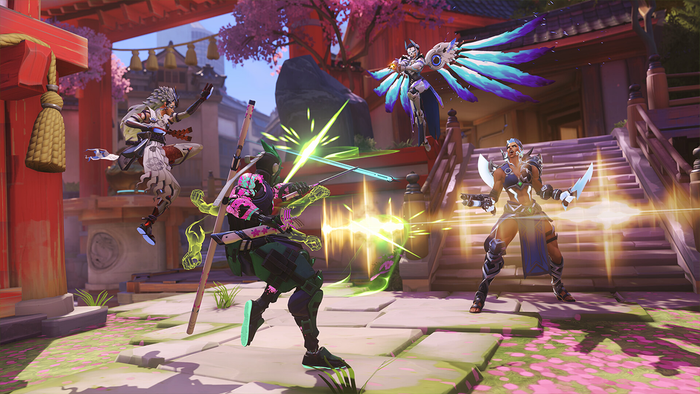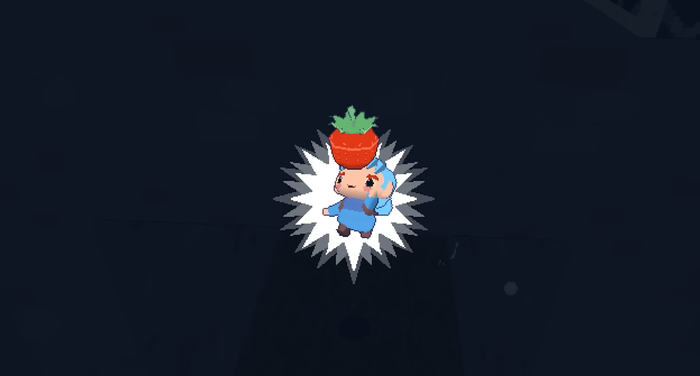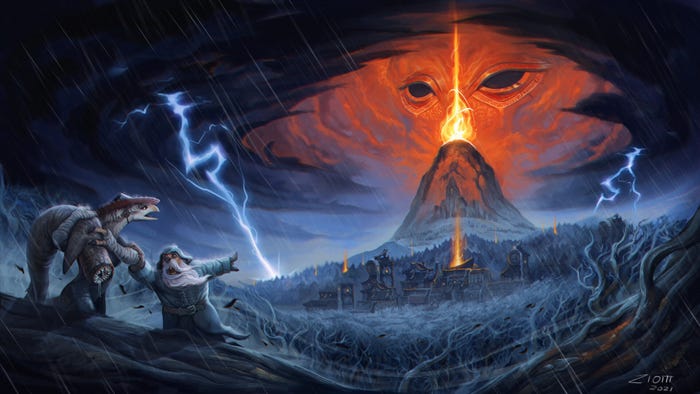
Featured Blog | This community-written post highlights the best of what the game industry has to offer. Read more like it on the Game Developer Blogs.
Ignoring art, performance and audio, what can be discerned about the gaming experience related to Terminator Salvation's game design with an emphasis on basic game design theory and uncomplicated cognitive science?

[ This is a repost from my Game Design blog over at http://arcadeberg.com ]
Terminator Salvation
Game Design Analysis
Arcade Berg
June 15th 2009
v.1.0
1 Introduction
The game Terminator Salvation, released spring 2009 has been getting less than great reviews. My intent has been to do a basic game design analysis based on the factors one can discover by simply playing the game.
The current[1] Metacritic[2] scores are: 56 (PC), 45 (PS3 ) and 47 (360).
Reviews tend to only describe the subjective experience one had while sitting down with the game.
Ignoring art, performance and audio, what can be discerned about the gaming experience related to game design with an emphasis on basic game design theory and uncomplicated cognitive science?
2 Summary
The analysis refers to Terminator Salvation’s core gameplay, it’s Risk Vs. Reward-system, the created need and appreciation from the player as well as other game design related issues. Topics including internal logic, climax, rail sequences and difficulty are all brought forth in a discussing manner.
2.1 Analysis Result Summary
While debating both some of the good and the bad, the analysis suggest that while several elements are working on their own, they collide with each other, making for a somewhat confused end product.
The player is being handed new tools to utilize before such a need has been created, making a great feel of appreciation absent.
Overall, the game is lacking focus and for all the parts to work in harmony for a greater result.
2.2 Game Summary
Title: Terminator Salvation
Platforms: PC/Xbox360/PS3
Genre: Third Person Shooter (Cover Mechanics)
Developer: GRIN
Publisher: Equity Games Productions AG, Evolved Games
Released: US – 19/5-2009. EU – 29/5-2009
3 Prerequisites
The following text will not show and tell about the game’s fundamentals and it is assumed that you as the reader have a basic understanding of the game, the genre and an interest for game design.
4 Analysis
I intended to perform the game design analysis by dissecting it somewhat and discuss various segments in more detail. The result is something similar to a form of bullet list with game design related topics and my thoughts about it.
I have tried to stay objective to a certain extent in way for me to present facts that are undeniably true along with an assortment of opinion based information of what I think makes for good or bad game design.
Meaning? I will not argue whether or not a certain enemy takes too much damage according to my skill level as a gamer, but I will debate against making a weapon useless a few minutes into the game.
At some occurrences in this text, I will touch upon the discipline of level design, as with many cases in games it’s difficult to differentiate the two apart forcing the inclusion of the other.
Of course, people don’t have to agree with me on what I from now will present. In fact, I hope there are many people who won’t. That’s one of many things that make game design more than just cognitive psychology and empiric science; it’s also about going with your guts.
4.1 Game Length
Let’s get the game length issue out the way. The game can and is considered to be short and I agree with that. My personal record for beating the game is 1 hour and 26 minutes, by skipping cut-scenes but having to wait during load times. I got that time playing the PC version.
However, a short game doesn’t constitute a bad game per default and I have no intent on discussing the retail price value as it is more affiliated with production, rather than game design.
4.2 Risk Vs. Reward using Cover Mechanics
The game is a pretty standard Cover Mechanic based Third Person Shooter, like one of GRIN’s other games; Wanted: Weapons[3] of Fate and Epic’s Gears of War[4].
Something a game within this genre gets for free is a working Risk Vs. Reward mechanic. This is also the case for Terminator Salvation.
While in cover you’re pretty much safe from all attacks, unless you’ve taken cover in a really exposed position. From cover you have a few options of what to do.
For relocating yourself to a more advantageous position, you can slide between covers, showing yourself during a much shorter time span than you would if you were to “detach” from cover and using regular moving/running to reach the next cover and attaching to that one. The risk level is very depending on the current layout of the battle. Very low to a potentially high risk vs. a low to high reward.
You can choose blind firing, meaning you fire the weapon over the cover without exposing yourself but with a tremendously bad accuracy. Low risk and little reward.
If blind firing isn’t your cup of tea, you can chose to raise yourself and take a steady aim. This exposes your body for enemy fire, but also gives you the possibility to execute precise aiming, having the bullets go where you want them to. This technique is, of course, recommended when you’re located outside of the enemies’ vision. This way you can yourself affect the risk element.
Because the most common ground enemy, the T-7-T (Spider) has a weak spot on his back you can also greatly affect the reward outcome of the reward by positioning yourself in a good spot before taking aim. If placed right, you can achieve a low risk scenario with great reward!
Looking at this, my personal conclusion is that Terminator Salvation has a well working Risk Vs. Reward mechanic.
4.3 Introduction Table
A game always consist of features and content, obviously. In Terminator Salvation, I’ve defined all gameplay related things introduced into one of three categories:
1. Gameplay – When the actual gameplay is changed.
2. Weapons
3. Enemies
All chapters in the game are somewhat alike when it comes to length, mostly thanks to the games short overall duration, therefore I will simplify it a bit by saying that each Chapter is 1/9 of the game. The game consists of 9 chapters.
In total the game consist of 21 smaller parts:
Gameplay Modes | 2 | (“Normal” Third Person and Rail Sequences) |
Weapons | 11 | (5 Carried, 2 Grenades, 1 Mounted and 3 Rail Specific) |
Enemies | 8 | (4 Normal, 1 Boss, 3 Rail Specific) |
I think of all these components as gifts that you, the player are given as tools to keep enjoying the game. Therefore, I also think that these gifts should be scattered evenly along the way as you progress throughout the game, constantly feeling that things are fresh and interesting. Mega Man[5] is a prime example of this effect, giving you a new weapon after each finished boss, as well as hidden energy tanks and other power ups that you can gain here and there.
In Terminator Salvation; 10 of the parts are presented in the first chapter. Meaning? During the first 11% of the game, you get to experience 48% of it.
Once done with 33% of the game; you’ve found 15 gifts equivalent to 71% of the game’s gameplay content.
After finishing 55% of the game, you’ve gained 100% of the Third Person gameplay’s gifts. All that remains are a few news in the two subsequent rail sequences.
Personally, I find this balance a disaster.
Agreed, one should put a bit of extra juice in the beginning because of many reasons. It’s the first thing most players get to experience and you want the player to get hooked on the excitement and variety. A lot of people never actually finish the games they play, hence putting too much goodies in the end might also result in the player not getting to know about them.
However, I don’t think it’s fair not to treat the player with anything new after finishing half of the game. No weapon, no enemy nor any boss battle.
With only minutes between each new introduction, I think it becomes too much for most players to appreciate each one and I find it to be a devastating way to, as a developer get the most out of each feature.

Terminator Salvation Introduction Curve
4.3.1 Created Appreciation
Just like when getting a gift for a friend, you’ll want to be as sure as possible that the friend actually wants what you’re offering.
Let’s say a man goes to work and the sun is up, he probably won’t give a thought about the sun keeping all evil vampires at bay. That same man on a meadow at night along with a vampire would definitely appreciate if the sun were to rise.
It’s the same in games when providing a new tool, such as a weapon in a shooter.
Overall, Terminator Salvation fails miserably on this, what I choose to call Created Appreciation except for one occasion:
The introduction of the pipebomb.
When you first encounter the T-600, aka. Endo/Endo Skeleton in the middle of Chapter 1 you have nothing but a rifle and a shotgun and can cause it no damage. The only thing to do is escape. This creates a feeling of inadequacy. Later on, in Chapter 3 you once again find yourself face to face with the T600 and even though you have grenades and a machine gun at this time, you still can’t hurt it. This creates the need for a way to defeat it. The player craves it.
Minutes thereafter you’re presented with the stronger type of grenade in the game, the pipebomb and finally you can defeat the T600! The player feels a sense of accomplishment and satisfaction. He really appreciates the pipebombs. He really appreciates the gift.
4.3.2 Lack of Weapon Appreciation
According to me the introduction of all the weapons in the game (excluding rail sequences) except for the pipebomb and the starting rifle, has unfortunately a negative effect on the gaming experience.
4.3.2.1 R870 Shotgun
You start out with the M16 Assault Rifle. Of course, being the first and only weapon you have at the beginning it’s a given weapon of choice to use.
Just about 100 meters into the first level the player encounters a few Aerostats which he is to defeat using the said M16. Directly after that very first enemy encounter the player gets the Shotgun.
After only one enemy encounter, there is nearly no possibility for the player to feel the need for a new weapon. The Shotgun also just so happens to be the weapon best suited for taking out Aerostats, bar none. It is also very capable of destroying T-7-T and is easier to aim with when using blind fire than with the M16.
Thus, the M16 is already made old and a less capable weapon after only a few minutes into the game.
4.3.2.2 RPG
After getting the Shotgun, there’s yet again, just one enemy encounter containing a few Aerostats before the next weapon is introduced; the RPG (Rocket Launcher). The most powerful weapon in the game presented in Chapter 1.
As discussed above, a need should be created before offering a new gift. During Chapter 1 you face what could be called a Boss. You’re introduced to the big, flying Hunter Killer at the same time as the most ideal weapon for taking it out; the RPG.
The need for a weapon stronger than the M16 and the Shotgun never occurs.
Hence, when getting the RPG no great sense of gratification takes place.
Because of this, even though faced with this huge Terminator machine, you’re not at a disadvantage for a second. The player is not required to achieve anything in particular to be rewarded with the weapon making it possible to win the fight; instead it just lies there before your feet for you to pick up along with a pile of infinite ammunition.
In addition to this, it’s very likely that you’ll have some extra ammunition when finishing the battle which makes you an incredibly strong foe when meeting the first T-7-T on the following level, destroying them without having to flank them as the game suggest. This in turn lessens the respect felt towards this new enemy tremendously.
There’s also an RPG placed in late Chapter 2, making it probable that you’ll have one in Chapter 1, 2 and 3.
Voila, the game’s strongest and most ferocious weapon is now turned into an everyday item and all the “Wow!” is gone.
4.3.2.3 Grenades
At the beginning of Chapter 2, you encounter the first T-7-T, aka. Spider, in the game. The encounter contains three of them. A ground based enemy with a weak spot on the back, making flanking a recommended tactics. That is, unless you have a few rockets left from Chapter 1.
Fighting and flanking a new kind of enemy that encourages a different approach than the Aerostat helps keep the game fresh for a while. However, before you meet another T-7-T you already have the Grenades!
Grenades make it possible to ignore the flanking procedure and simply throw a grenade head on instead.
After one measly encounter with the T-7-T I find it questionable if they already need a new device for defeat? A device that makes the recently introduced enemy much easier and the procedure for defeating it much more simple minded, risking the sense of achievement to occur less often.
I imagine that the game would do well with keeping the grenade secret for a little while longer, as there, yet again was likely no feeling of a need for them yet.
4.3.2.4 M249 Machinegun
Early on in Chapter 3 you get the M249, a machinegun with greater damage, higher fire rate and greater size of the clip than the M16. The M249 is better than the M16, it’s as simple as that. From there on extra ammunition is scattered enough for the M16 to turn utterly meaningless.
What’s silly about this is that you’ve been provided with a vast amount of grenades since they were introduced in addition to a few rockets, so the T-7-T still hasn’t rose to be a real problem and the need for a stronger weapon hasn’t come about.
But the real problem with this introduction is that as mentioned, by now the player has been exposed to the Shotgun, ideal for defeating Aerostats, RPG, grenades and the M249.
I don’t think it’s too far off to assume that they player hasn’t spent many minutes using the M16 and from now on, there is absolutely no use in doing that. The end result is that in some cases the M16 will only be used to shoot the very first Aerostats in the game and nothing but.
The M16 isn’t nearly as encouraged as it ought to be.
4.3.2.5 M79 Grenade Launcher
The M79 Grenade Launcher is presented within a very weird contextual frame.
It is introduced in a hefty enemy encounter against Aerostats, T-7-T and T600. The problem is that it is presented alongside with several RPG’s. Since the RPG is a better weapon, the result is a suppressed feel of appreciation. If it were to be presented as a weapon stronger than what you already have, I believe the player would be very thankful for this new tool in the midst of battle, instead of let down by its lack of efficiency compared to the weapon lying next to it.
Presenting the M79 along with some RPG’s makes it a disappointment.
4.4 Internal Logic
It is very important to maintain an internal logic within all games for the player to be able to learn and adapt.
If you only were able to crush some of the bricks as Super Mario[6], while other were indestructible but looking exactly the same, how are you supposed to plan your route?
If buttons you can interact with normally shine with a red light, how are you supposed to know that there a few grey and matt buttons in the game that you also can press?
The internal logic is never to be broken!
Terminator Salvation breaks it.
When first faced against the T-600, you’re equipped with the M16 and Shotgun. You cannot damage the enemy and must escape.
The second time you encounter it, you have the possibility to carry a M249 and a RPG. You still can’t damage it and must yet again escape.
Shortly thereafter you get the pipebomb, it is now possible to defeat the very same T-600 as before with any weapon in the game, including the M16!
How come previously ineffective weapons are suddenly fully capable?
Fortunately, it’s a one-time-switch and from there on all T-600’s can be defeated with all weapons. Being a strange occurrence, at least it doesn’t change back to invincible machines later on.
4.5 What’s expected and awaited doesn’t happen – Harvester
During a cut-scene at the end of Chapter 2, helicopters are taken down a by a gigantic machine; the Harvester.
The human NPC’s already talks about the machine during Chapter 1 and its incredible threat. After the said cut-scene the player escapes the Harvester while dodging its plasma projectiles, as there is no way to fight it.
That’s the first and last time you see the Harvester in the entire game.
I’ve read several reviews questioning as to why you never encounter it again.
If you present the Harvester, Skynet’s super robot early on in the game; common narrative dictates that there should be at least one more meeting. It’s probable that players feel left out when the game ends and the Harvester not once showed himself again. The thing that many expected to be a final boss.
The game demonstrate a highly dangerous enemy, bigger than anything else in the game, feared by the avatars companions and equipped with a versatile weaponry but only let you experience him for at most, a couple of minutes without being able to interact with it.
That’s not a tease, that’s dissatisfaction.
4.6 Rail Sequences
Including rail sequences in shooter games seems to be standard practice nowadays. Gears of War, Wanted – Weapons of Fate, Uncharted, Blacksite and Terminator Salvation to name a few. They all have it.
It’s a clever thing to do as it consist of a different gameplay than the “normal” parts of the game. It helps breaking up the game, keeping it from turning to repetitive and monotonous.
This is also the effect achieved in Terminator Salvation, which is good.
However, I have three things to mention regarding the rail sequences that I don’t think are satisfactory. Three complaints, if you will.
4.6.1 First rail – Too early to matter
There are three rail sequences in total.
Based upon that the assumption that they are tools to be used for breaking up a game’s gameplay; the first rail is too early and its effect is negated.
Before the first rail, you’ve only been in a total of three enemy encounters. The time to reach the first rail is without exaggeration less than 10 minutes of game time (not counting cut-scenes) for many players.
The improbability for a need of gameplay variation at this point is high.
4.6.2 No gain for the pain
If you were to split the first rail into three sections, the middle one would be where you are to destroy different parts of a flyer Hunter Killer in a predetermined sequence.
1. Damaged Engine
2. Sensor Pods
3. Plasma Cannons
What I’m to discuss is not as big of a problem on the hardest difficulty as each part can take more damage before being destroyed, thus being able to “survive” longer.
First you are to shoot at the Hunter Killer’s right engine until it explodes and if he so wishes; destroy some Aerostats, after that’s completed the player has nothing to do but wait until the game tells him to destroy the Sensor Pods.
Why can’t the player start destroying the pods at once, after being done with the engine? If he were to be able to do that, he’d be rewarded for his skill and speed by having more time to finish the remaining parts.
What happens when he has nothing to do but wait is that he’s being punished for being skilled! It’s not fun doing nothing.
This happens after destroying the engine, after destroying the sensor pods and after destroying the plasma cannons.
If the player actually wants something to do all the way of the rail, he’d better miss a lot while shooting.
4.6.3 Unable to evade injury
The following is more of a problem as you increase the difficulty level.
During the second rail sequence you’re equipped with an RPG with infinite ammo.
At the end of the level, when the player is probably already injured a bunch of Aerostats descend from the sky attacking you.
As you’re equipped with the RPG it’s pretty near impossible to hit them, making you hope you have enough health left to survive their attacks until they retaliate on their own.
I can only speak for myself on this, but I’ve spent hundreds of hours with the game and I can’t hit them.
The player should always have a (reasonable) possibility to evade injury. If not, it’s a guaranteed death for the player if he’s been too injured previously during the level.
4.7 No climax at the end
Imagine this:
You’re at the last stage of a game. You encounter a bunch of the type of enemies you’ve already killed dozens of. You defeat them and run to parked helicopter. The game ends.
There’s that. There’s Terminator Salvation.
Everybody likes to feel good for achieving something, to overcome an obstacle.
When you leave home and close the door behind you, you don’t think to yourself; “Yes! I managed to shut the door!”, but when you finally beat that difficult final boss in a game you actually feel kind of good. You feel a sense of accomplishment.
In movies, comics, books and games alike, people want that very last thrill. The final joyride before letting go of the controller.
Unfortunately, there’s nothing of the sort in Terminator Salvation.
The very last fight in the game consist of a group of T-600 walking down a straight line towards you while you’re standing behind cover having access to a great amount of pipebombs and RPG ammunition.
Players don’t get that very last dose of endorphins.
4.8 Difficulty Level
Discussing the difficulty level in a somewhat objective manner is a tough one, as difficulty per default is mostly a variable relative to your skill as the player.
In any case, I’ll bring forth three points of interest affecting the overall difficulty vastly.
4.8.1 Completely safe behind cover
I can finish the game in coop on the hardest difficulty by myself. Not to say that’s necessarily a bad thing but let’s examine why it’s possible.
While in cover, unless placed in a really awkward position you’re completely safe. This applies for all encounters except for very few including the T-600.
4.8.2 Let the NPC fight for you
Your allies in combat have no restrictions concerning what they’re allowed to fire at or not, making them very helpful when fighting Skynet.
This alongside with the fact that they’re unable to die (unless otherwise dictated by a mission objective) and you being safe behind cover makes it possible for you to sit tight and just wait until the NPC has won the fight for you. Alas, it might take a while.
Nor are there any normal enemy encounters where there’s an infinite amount of enemies. It’s a set amount.
Because of this, there is no incitement to risk your neck if you don’t want to.
4.8.3 A large amount of explosives
The levels contain a lot of explosives ammunition, period.
Grenades, pipebombs, M79 and RPG ammunition.
Assuming explosive weapons are better than none-explosive ones, great availability of course makes the game easier. But making a game easy isn’t wrong, per se.
The problem is that there is such a vast amount of explosives in the game, in every chapter that on normal and easy difficulty, you can finish the entire game without using the none-explosive weapons much at all.
The gameplay halting consequence of this is that the need for tactical thinking and flanking is obsolete. The previously encouraged way to play using flanking is now redundant, which is against the games explicit instructions on how to play.
In addition to this, the sense of greatness for acquiring these strong weapons is dulled by far.
4.9 Weapon Switching
The following is restricted to the Xbox 360 and Playstation 3 versions of Terminator Salvation.
You can carry two guns and two types of grenades at the same time.
To quickly change between the carried guns, a quick tap on a button does the trick.
It is also possible to change gun by holding the button and then pulling a stick towards the icon of the other gun once it appears on screen. This technique has no advantage over the much quicker alternative.
To change type of grenade however, you’re obligated to use the press and hold technique which is strange, because the quick tap method would be faster and more straight forward to use. In addition to this, there is an unused button on the controller, which would be ideal for this function. Not to say that simply because there is an unused button, one must assign something to it.
The main issue with having to hold down the button to bring up the weapon menu to change grenades is that it forces you to stop moving, making it impossible to change grenade while running and evading the enemy.
I can’t see the necessity for the slower and limiting weapon-menu as you always have one gun and one grenade active with only one other of each available.
4.10 Health Recovery System
A very common system for health recovery in third person shooters is that if the player manages to keep out of harm’s way and not get hit for a set amount of time, the health starts to regenerate until full or injured once again.
Terminator Salvation does something similar but with a twist. While in combat, the health does not regenerate. Only when safe is the recovery system activated.
In effect, this makes it impossible to just sit tight behind a cover to wait for the health to fill up, as it is possible and common practice in e.g. Gears of War.
The player is required to finish a fight with the amount of health had at the beginning of it, making the player less prone for taking great risks. He will not be as likely to trade causing damage to the enemy in return for taking damage himself; a usual tradeoff used in Gears of War.
Unfortunately, because of the NPCs being able to finish battles for you, you can still opt to duck and cover and just wait.
5 Conclusion
Terminator Salvation has a working foundation with its cover gameplay as core mechanic, offering a user friendly Risk Vs. Reward-system. Unfortunately other aspects of the game does not fully align with the encouraged play style, as different designs collide and contradict each other.
The game has a selection of different goodies for the player to look forward to although most of it is introduced early on and the occurrence of something new to happen is more and more seldom as the player progress.
Overall, the game is lacking focus and for all the parts to work in harmony for a greater result.
[1] 10/6-2009
[2] http://www.metacritic.com
[3] Warner Bros. Interactive Entertainment Inc., 2009
[4] Microsoft Game Studios, 2006
[5] Capcom™
[6] Nintendo™
Read more about:
Featured BlogsAbout the Author(s)
You May Also Like









